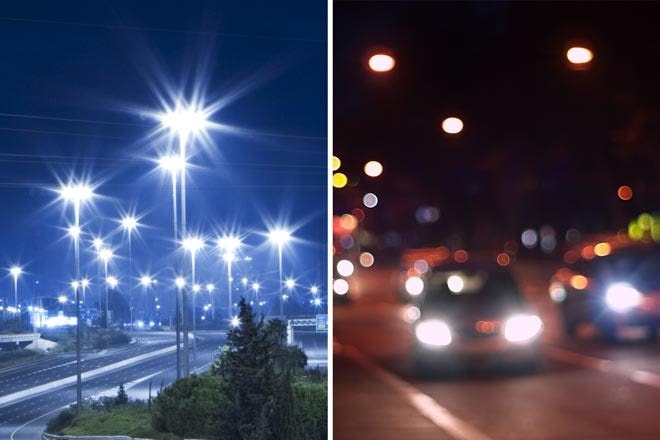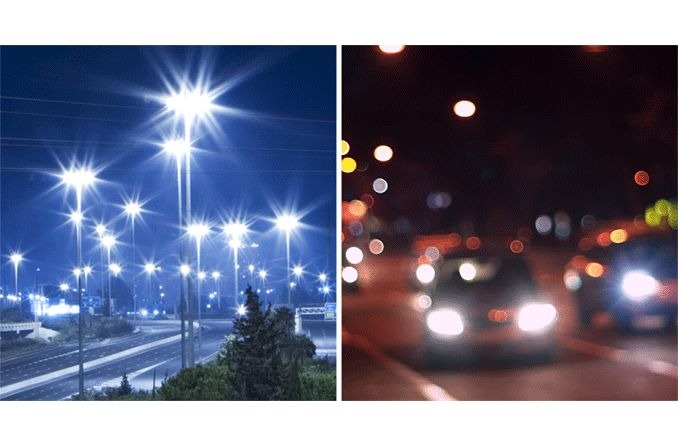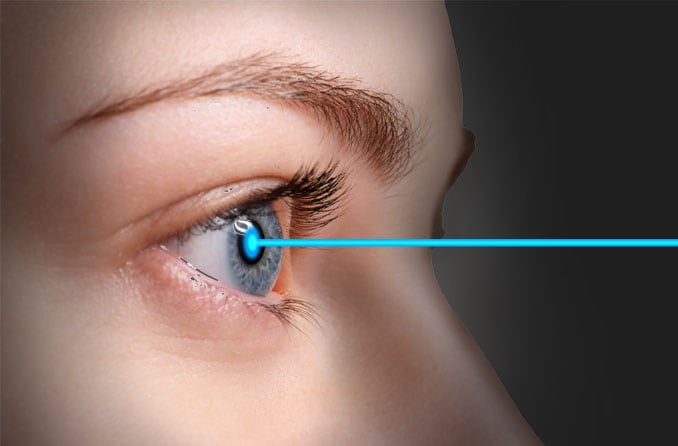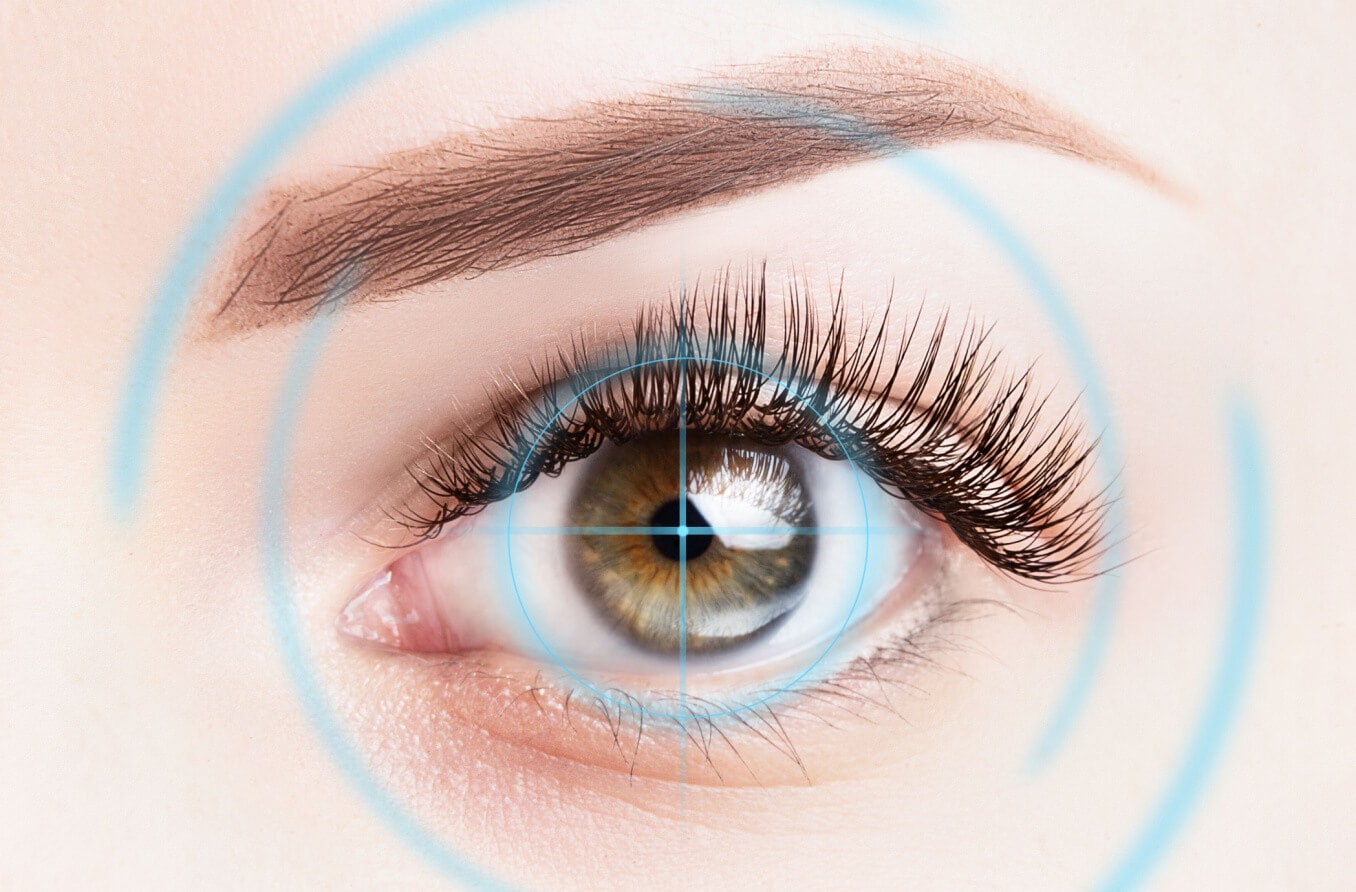Millions of Americans have had LASIK eye surgery to correct their vision since it was introduced in the United States more than 20 years ago, and experienced LASIK surgeons report that serious complication rates can be held below 1 percent.
Common LASIK complications and side effects are listed below. Most of these problems can be resolved with medical treatment or additional "enhancement" surgery.
Temporary discomfort and vision disturbances. Discomfort during the first few days following LASIK surgery, such as mild irritation and light sensitivity, is normal and to be expected. During the first few weeks or months you also may experience: halos; glare and starbursts in low-light environments, especially at night; dry eye symptoms; hazy vision; and reduced sharpness of vision. In the vast majority of cases, these problems are temporary and disappear completely within three to six months.
Flap complications. The LASIK procedure involves the creation of a thin hinged flap on the front surface of the cornea. This is lifted during surgery for laser reshaping of the eye. The flap is then replaced to form a natural bandage.
If the LASIK flap is not made correctly, it may fail to adhere properly to the eye's surface or microscopic wrinkles called striae (STRIE-ee) could develop in the flap. These flap complications can cause optical aberrations and distorted vision.
Studies indicate that flap complications occur in from 0.3 to 5.7 percent of LASIK procedures, according to the April 2006 issue of American Journal of Ophthalmology. In a study of 3,009 consecutive LASIK surgeries performed August 2002 through July 2009 using a femtosecond laser for flap creation, flap complications occurred in fewer than one-half of 1 percent (0.37 percent) of these procedures, and all complications were successfully managed within the same surgical session.
Again, remember that you can reduce your risk of LASIK complications by choosing a reputable, experienced eye surgeon.
Some problems associated with LASIK flap complications include:

Left: What someone with post-op starbursts might see at night. Right: Nighttime halos.
- Irregular astigmatism. This is caused by an unequally curved corneal surface. Irregular astigmatism also can occur from laser correction that is not centered properly on the eye or from irregular healing. Resulting symptoms may include double vision (diplopia) or "ghost images." In these cases, the eye may need re-treatment or enhancement surgery.
- Epithelial ingrowth. This is when cells from the outer layer of the cornea (epithelium) grow under the flap after LASIK surgery. In most cases, epithelial ingrowth is self-limiting and causes no problems. But in some cases (reported to be 1 to 2 percent of LASIK procedures), symptoms of discomfort and/or blurred vision can occur, and additional surgery is needed to lift the flap and remove the epithelial cells.
- Diffuse lamellar keratitis (DLK). Nicknamed "Sands of the Sahara," this is inflammation under the LASIK flap that may have several causes. Some inflammation of the cornea after LASIK surgery is normal. But if it is uncontrolled, as in DLK, it can interfere with healing and cause vision loss. If DLK occurs, it usually responds to therapies such as antibiotics and topical steroids. Also, the flap might need to be lifted and cleaned for removal of inflammatory cells and to prevent tissue damage.
- Keratectasia or keratoconus. This is a very uncommon bulging of the eye's surface that can occur if too much tissue is removed from the cornea during LASIK or if the cornea prior to LASIK is weak as evidenced from corneal topography mapping. Rarely does keratoconus develop after LASIK with no known risk factors. Enhancement laser surgery is usually not suitable, and gas permeable contact lenses or corneal implants (Intacs) may be prescribed to hold the cornea in place, or a treatment called corneal collagen crosslinking may be performed to strengthen the cornea.
Dry eyes after LASIK. Some people who have LASIK surgery experience a decrease in tear production that can cause eye discomfort and blurred vision. Almost half of all LASIK patients experience some degree of temporary dry eye syndrome, according to the April 2006 issue of American Journal of Ophthalmology.
Dry eye syndrome after LASIK surgery usually is temporary and can be effectively treated with lubricating eye drops or other measures.
Dry eye problems usually disappear when healing of the eye is complete, which can take up to six months. People who already have severe dry eye usually are eliminated as LASIK candidates.
Significant undercorrection, overcorrection or regression. Not everyone will achieve 20/20 vision after LASIK eye surgery, and contact lenses or eyeglasses for some or all activities may still be required in rare cases. If the laser removes too much or too little corneal tissue, or your eye's healing response is not typical, your visual outcome will be less than optimal.
One possible cause of a less-than-perfect outcome is that your eyes did not respond to laser eye surgery in a predictable manner. Another possible cause is that your eyesight may have been optimal shortly after LASIK but regressed over time due to "over-healing."
In most cases, a significant undercorrection or regression can be successfully treated with additional laser vision correction after your surgeon confirms your residual refractive error is stable.
Eye infection. Infections rarely occur after LASIK. Because the corneal flap acts as a natural bandage, eye infections occur less frequently after LASIK than after flap-free corneal refractive procedures like PRK. Still, it is very important to use medicated eye drops as directed after your LASIK procedure to avoid infection and control inflammation as your eyes heal.











